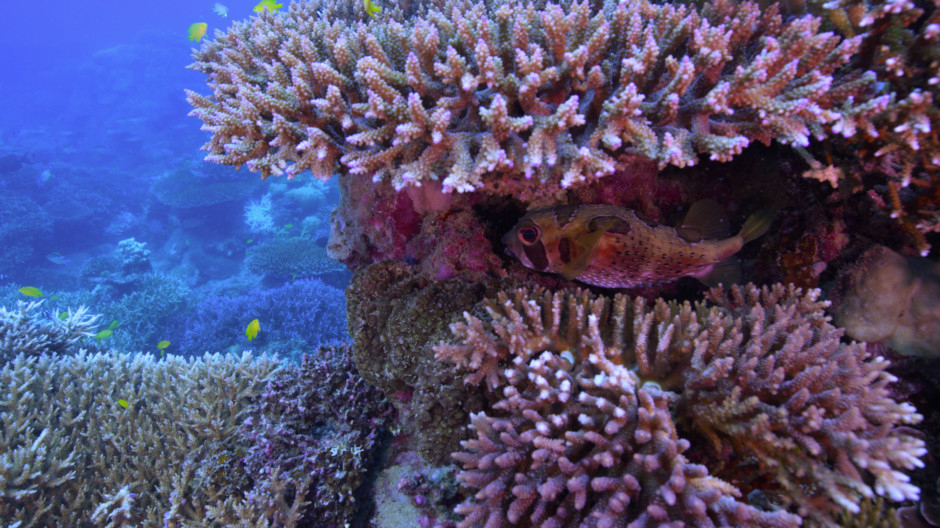
While governments and politicians dither about global warming, the world’s undersea coral is moving toward a devastating death. If you don’t believe that, or don’t think it really matters, Chasing Coral presents the evidence with beauty, intelligence and a surprising amount of emotion.
One of the things that makes this such an involving documentary, the winner of Sundance’s documentary audience award, is that its cast of key characters is not the usual roundup of concerned scientists, though they are out in force.
Director Jeff Orlowski rather spends a good bit of time with Zack Rago, a young camera technician who’s a self-described “coral nerd,” and former British ad executive Richard Vevers, who changed his life to advocate for the world’s oceans.
These people not only care passionately, they turn out to be key players in an ambitious project to document the astonishing fact that about 50 per cent of the world’s corals, an essential part of the earth’s ecosystem, have died in the last 30 years.
Vevers, in fact, brought director Orlowski onto the project after seeing his 2012 doc Chasing Ice, which told a similar story about the disappearance of Arctic glaciers.
Vevers’ articulate passion and persuasive manner make him the ideal spokesman for the project, and he sets the tone with an opening quote that notes that while “most people stare up into space with wonder, we have this almost alien world on our planet, just teeming with life.”
Vevers’ first project was something called the XL Catlin Seaview Survey, an attempt to use still cameras to document what goes on on the ocean floor.
After first noticing the disappearance of one of his favourite creatures, the weedy sea dragon, Vevers began noting that the world’s vibrantly coloured coral, undersea animals though they resemble plants, were first bleaching white and then dying en masse.
The culprit, as in all too many ecological crises, is global warming, as oceans have heated up some two degrees and become more acidic as a result.
Once Vevers focuses on this, he connects with coral experts like Ruth Gates of the Hawaii Institute of Marine Biology, who helps him (and us) understand how coral as an organism is “sophisticated in a quiet way.”
And once he discovers that a mass global bleaching event is imminent, Vevers decides that the best service he can provide the undersea universe is to photograph the bleaching as it happens in order to alert the world about the crisis.
It’s at this point that Vevers and Orlowski cross paths with Rago, who is so into coral he keeps fish-less tanks filled with them at home and who idolises John “Charlie” Vernon, the father of reef science.
Though photographing undersea coral sounds fairly straightforward, it proves to be considerably harder than it sounds, and a good part of Chasing Coral unspools like an adventure story as our intrepid group runs into a series of obstacles.
After going to considerable trouble, for instance, to create undersea automated time lapse cameras, it was discovered that they were malfunctioning and not taking useful pictures.
With the damage-causing warm currents shifting and the clock ticking on this bleaching event, the team makes the last-minute decision to move to another location and do the undersea shooting manually every day for 40 consecutive days.
Watching something they love die in front of their eyes turned out to be a hugely emotional for this crew and, just as surprisingly, their footage brings tears to the eyes of a nominally reserved group of scientists when it’s shown at the International Coral Reef Symposium.
Whether warning the world this way will matter, Chasing Coral is in no position to predict. There is some optimistic talk about “young people who can and will make a difference” and sweet shots of a determined baby turtle, but, obviously, no one knows. One thing, however, is certain. We have been warned.
------
Don’t miss it!
Chasing Coral is now streaming on Netflix.















